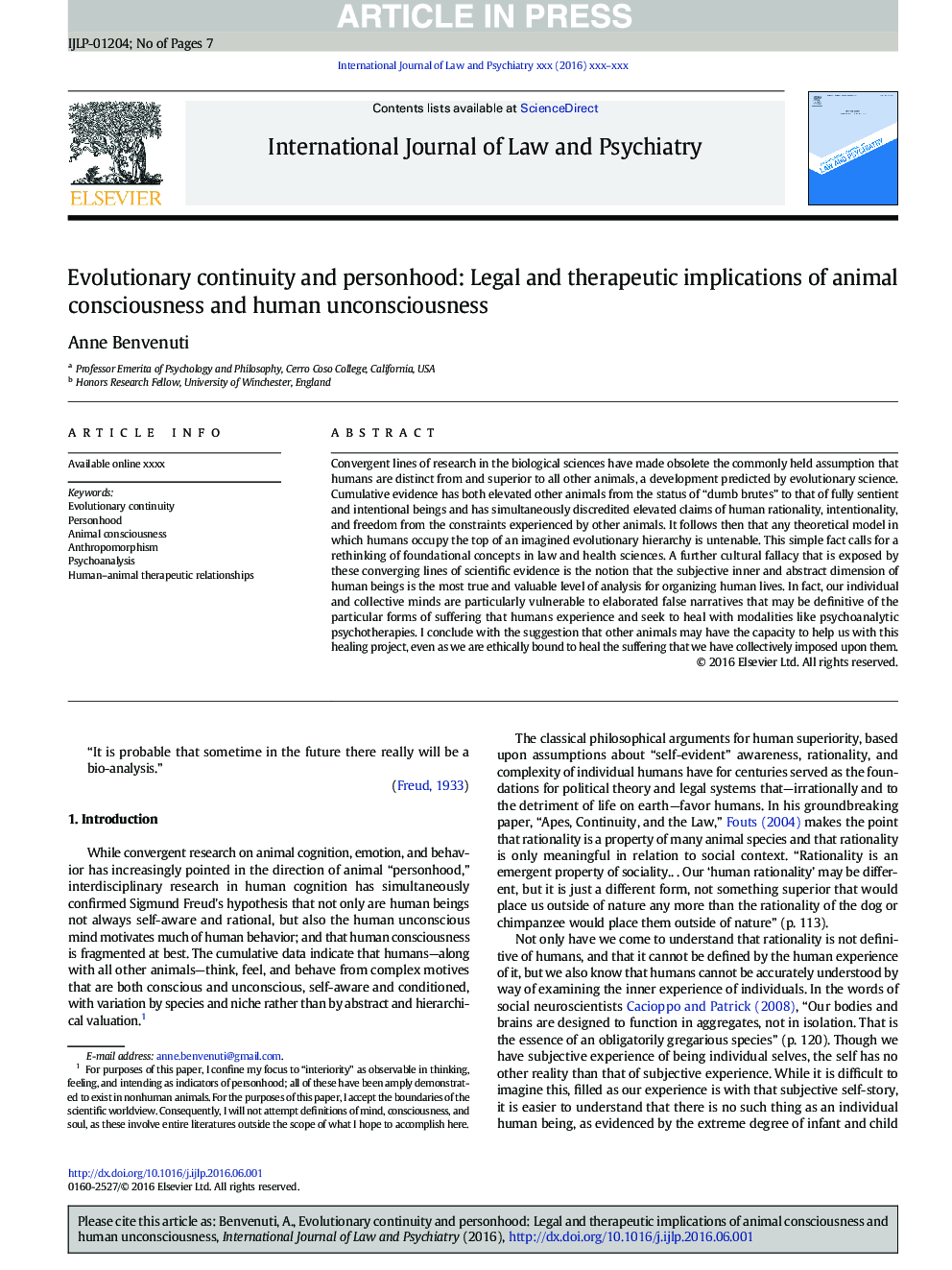| کد مقاله | کد نشریه | سال انتشار | مقاله انگلیسی | نسخه تمام متن |
|---|---|---|---|---|
| 4760543 | 1422274 | 2016 | 7 صفحه PDF | دانلود رایگان |
عنوان انگلیسی مقاله ISI
Evolutionary continuity and personhood: Legal and therapeutic implications of animal consciousness and human unconsciousness
ترجمه فارسی عنوان
پیوستگی تکاملی و شخصیت: پیامدهای قانونی و درمانی آگاهی حیوان و ناخودآگاه انسان
دانلود مقاله + سفارش ترجمه
دانلود مقاله ISI انگلیسی
رایگان برای ایرانیان
کلمات کلیدی
تداوم تکاملی، شخصیت، آگاهی حیوانات، انسانشناسی روانکاوی، روابط درمانی روحی انسان و حیوانات،
موضوعات مرتبط
علوم پزشکی و سلامت
پزشکی و دندانپزشکی
پزشکی قانونی
چکیده انگلیسی
Convergent lines of research in the biological sciences have made obsolete the commonly held assumption that humans are distinct from and superior to all other animals, a development predicted by evolutionary science. Cumulative evidence has both elevated other animals from the status of “dumb brutes” to that of fully sentient and intentional beings and has simultaneously discredited elevated claims of human rationality, intentionality, and freedom from the constraints experienced by other animals. It follows then that any theoretical model in which humans occupy the top of an imagined evolutionary hierarchy is untenable. This simple fact calls for a rethinking of foundational concepts in law and health sciences. A further cultural fallacy that is exposed by these converging lines of scientific evidence is the notion that the subjective inner and abstract dimension of human beings is the most true and valuable level of analysis for organizing human lives. In fact, our individual and collective minds are particularly vulnerable to elaborated false narratives that may be definitive of the particular forms of suffering that humans experience and seek to heal with modalities like psychoanalytic psychotherapies. I conclude with the suggestion that other animals may have the capacity to help us with this healing project, even as we are ethically bound to heal the suffering that we have collectively imposed upon them.
ناشر
Database: Elsevier - ScienceDirect (ساینس دایرکت)
Journal: International Journal of Law and Psychiatry - Volume 48, SeptemberâOctober 2016, Pages 43-49
Journal: International Journal of Law and Psychiatry - Volume 48, SeptemberâOctober 2016, Pages 43-49
نویسندگان
Anne Benvenuti,
